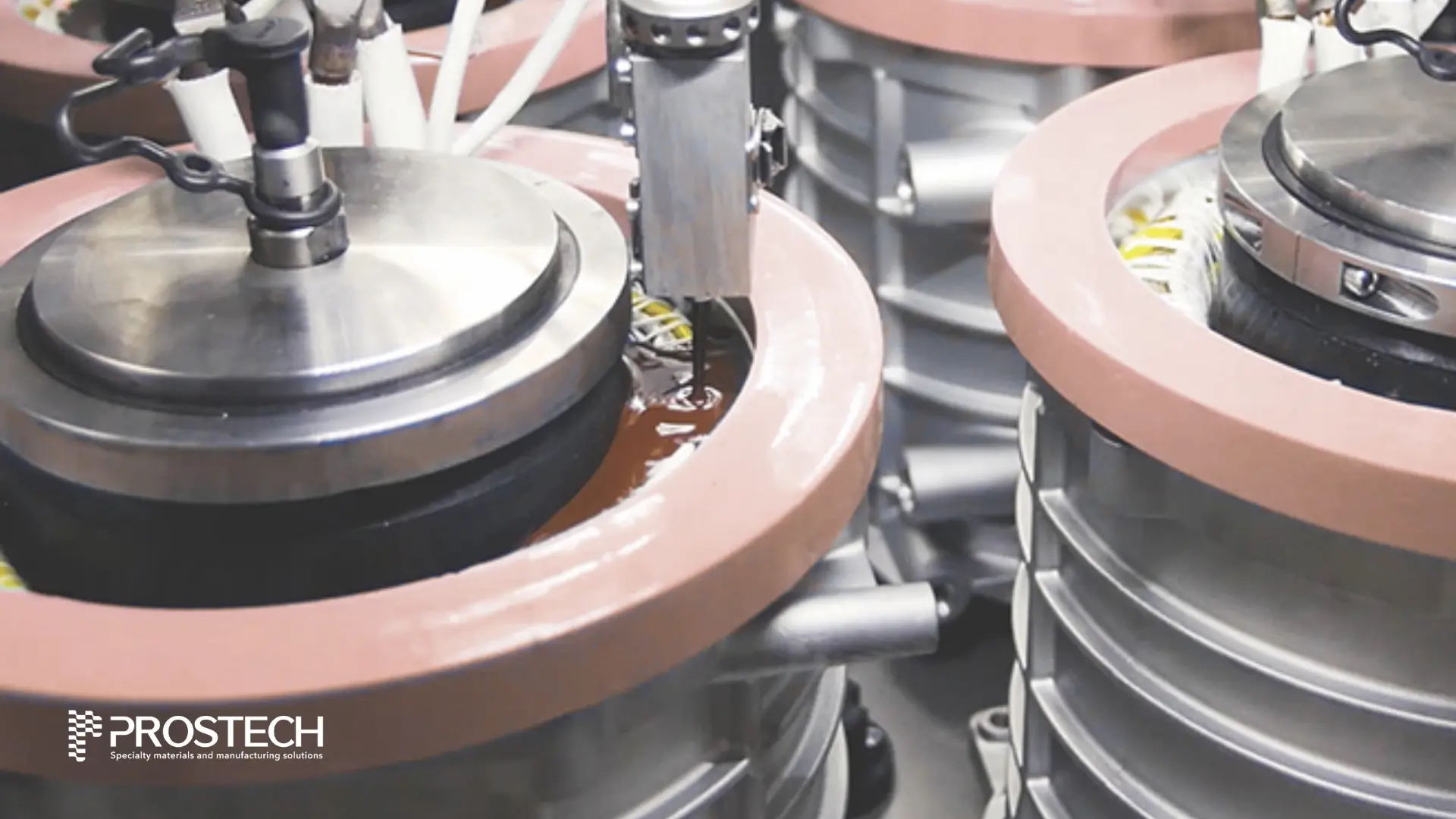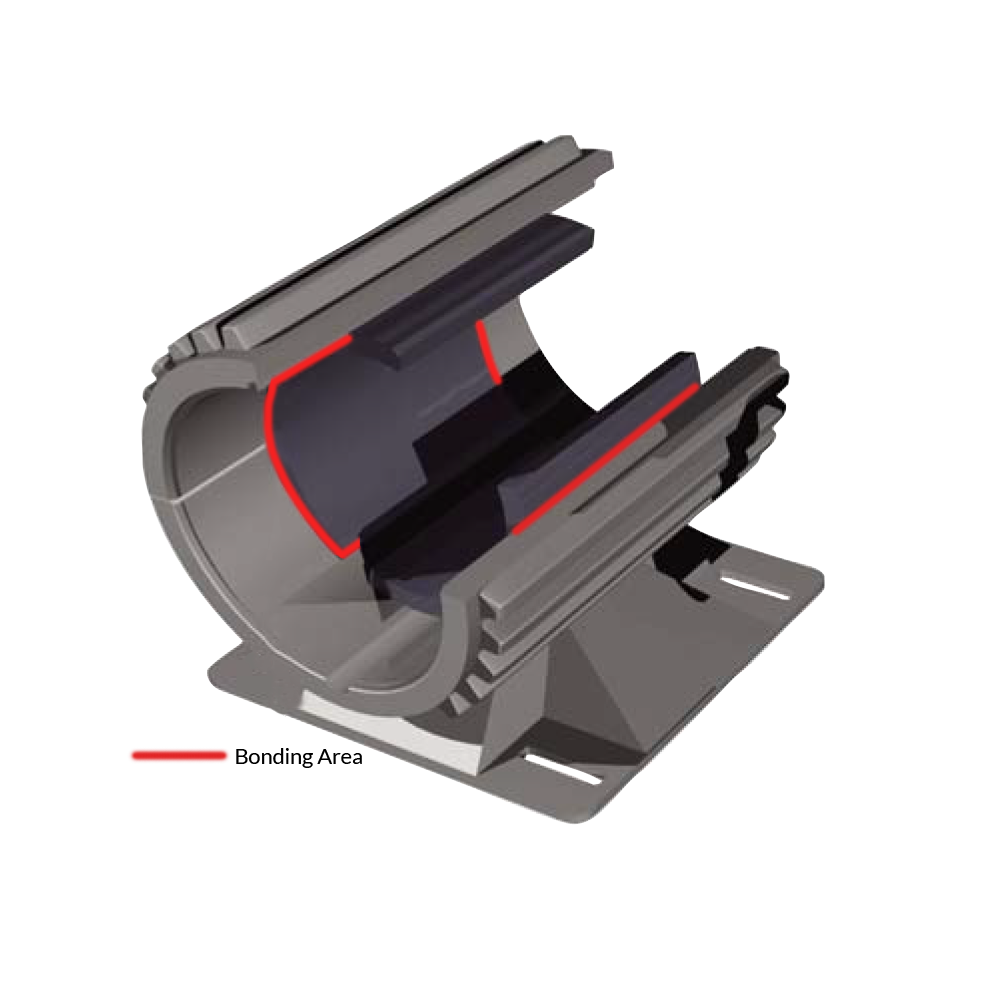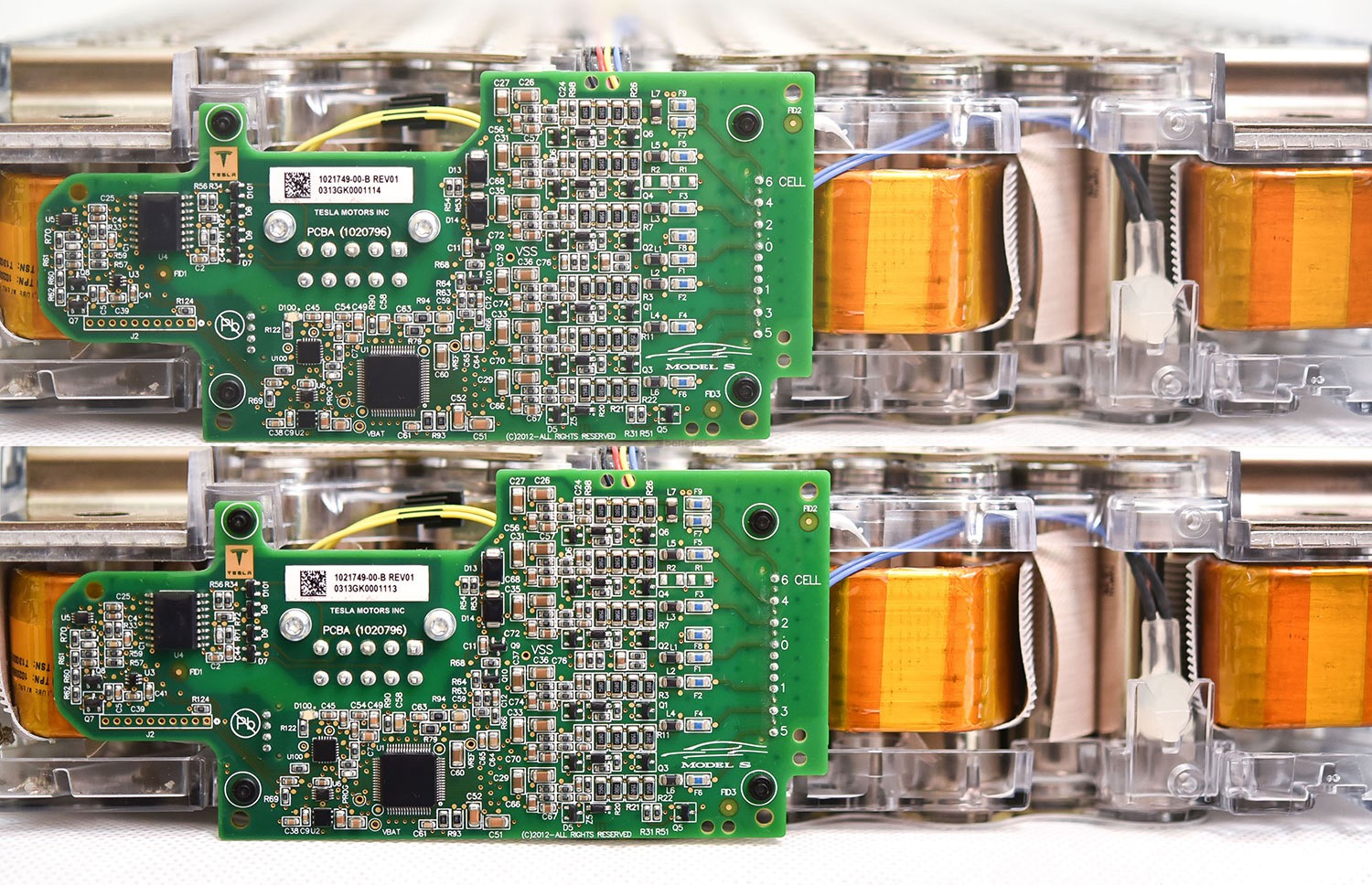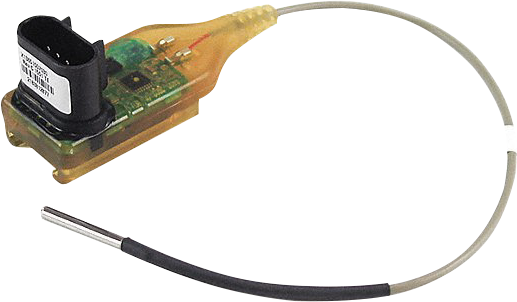EV BATTERY DENSITY CHALLENGES
One fundamental purpose of a battery is to pack as much power into as small a space as possible. This sounds simple, but as power density increases, new challenges arise. The denser a battery becomes, the more heat is generated in a smaller space, especially during a failure event.
With increasing range targets for Electric Vehicles, the charge density of the battery pack is a hot topic. Good thermal management and protection for lithium cells are critical in maintaining a battery’s safety. Packs must be built to withstand the rigors of automotive. Shock, vibration, impact resistance, crash, and environmental compatibility are all important factors.
Designing a high-performance battery module that remains safe under all failure conditions requires careful attention to thermal management. In addition to good thermal management practices, battery engineers are using interstitial encapsulation methods to provide even better protection.
To overcome this challenge in the module assembly process, two-component materials such as silicone, silicone foam, epoxy, epoxy foam, and polyurethane foam are mixed and dispensed into the module to fill the spatial cavities between each cell. Encapsulating the cells with these specialty materials can prevent thermal runaway and thermal propagation, and reduce mechanical shock and vibration under normal use conditions. These enhancements ensure better safety, increased mechanical stability, and improved long-term battery performance.
CHALLENGES
THERMAL RUNAWAY AND THERMAL PROPAGATION
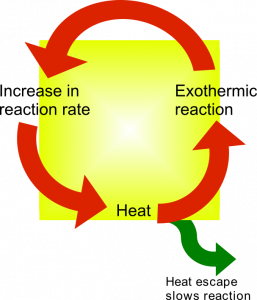 |
When one cell rapidly degrades or is exposed to hazardous road conditions, such as an object on the road with the potential to penetrate the battery pack, there is the risk of thermal runaway. Module design also influences this risk; the closer the cells are, the more likely that thermal runaway can propagate to other cells. Thermal events can quickly spread from cell to cell and cause catastrophic failure, which is a dangerous situation for the driver and passengers of an electric vehicle. |
SHOCK AND VIBRATION IN ELECTRIC VEHICLES
During the regular operation of an electric vehicle, the battery module is subjected to harsh road and environmental conditions such as external shocks and vibrations. These impacts and vibrations cause mechanical stress that increases the likelihood of deforming or damaging battery components. Ultimately, unmitigated mechanical shock and vibration negatively affect the module’s reliability, longevity, and safety.
LONGEVITY OF LITHIUM-ION BATTERIES
Lithium-ion batteries tend to swell over time, mainly due to off-gassing during charging cycles. The typical non-linear aging of each cell can result in unintended mechanical interference between each cell, which degrades performance and could lead to mechanical failure. As one cylinder swells, it can create unwanted pressure on adjacent cells, ultimately impacting the longevity of the battery.
MATERIAL AND THE PROPER MIX
Encapsulating foam is critical to counter the aforementioned challenges, as it prevents thermal propagation and mechanically secures each cell of the pack. However, material processing and application can create an additional set of concerns. Inadequate ratio and/or inadequate blend of the two components can result in non-uniform foam and can therefore impact performance. Fluid delivery can also result in an insufficient or excess volume of material, resulting in lost product.
SOLUTION
 |
MATERIALS – 2K Encapsulant Foam Key Benefits:
|
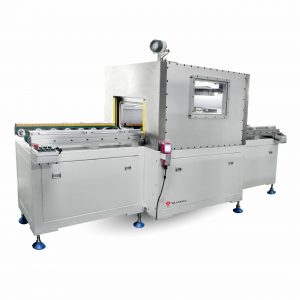 |
2K DISPENSING SYSTEM
|
Please contact us for more information



